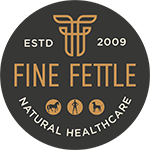In the same way that spectacles help focus poor eyesight but have no medicinal properties themselves; or walking sticks help people walk but have no medicinal properties themselves, so Happy Tummy™ helps all creatures avoid illness but has no medicinal properties itself.
HOW IT WORKS
The principal way in which Happy Tummy charcoal works is by re-balancing the acid/alkaline of the digestive system. It is comparable to passing a superb biological filter through the system where it adsorbs toxins and re-balances without adding anything to, or burdening, the system in any way. Its role is a passive one.
The re-balancing of the pH facilitates an environment where minerals, vitamins and nutrients are utilised at their optimum. The trickle feeding of Happy Tummy to equines, cattle, companion animals (and all other creatures) on a daily basis helps maintain condition, good temperament and excellent performance all round.
For animals with gut-related problems this is the safest and most effective feed supplement with which to address these issues. Results are very quick, there are no detrimental side effects, it’s easy to use and very economical.
WHAT IT IS
Happy Tummy™ is made up of specially selected, 100% pure hardwood charcoal sourced from sustainable woodlands. It contains no fillers, binders or additives. It is made from naturally active charcoal produced in a traditional way.
We chose a particular hardwood charcoal for our product because of its superior and special properties.
NOTE: This type of charcoal is an approved feed material, whereas activated or medicinal / industrial charcoal is not an approved feed material. Medicinal / activated charcoal has its place in medicine and industry but should not be used as a regular feed additive since, as a strong super-adsorbent, it can compromise mineral, vitamin and nutrient levels.
ACTIVATED charcoal is a modern, man-made material. Mammals (including humans) that have consumed natural charcoal as part of their diet over the millennia would not have experienced, or evolved with, activated charcoal, which behaves differently from natural charcoal. They are not the same product.
Commercial quantities of activated charcoal are made from coconut shells (because there is an abundance of this material from the palm oil industry). To make powdered activated charcoal (PAC) usable it needs to be encapsulated in some way or pelletized. Pellets are made using a binder/s such as icing sugar, gum tragacanth, fats, oils, aspartame & etc. It is, therefore, not a pure product.
NATURAL CHARCOAL
On the other hand, natural charcoal has been used for thousands of years as an aid to good digestion. A healthy digestive system or tummy is the foundation of a strong immune system, and Happy Tummy™ supports gut health by adsorbing toxins and intestinal gases, and removing them from the system naturally.
Happy Tummy™ Charcoal is riddled with a network of crevasses, cracks, tunnels and pores, so much so that the combined surface area of a 1cm cube would unfold to an area of around 500 – 1000 square metres! This tremendous surface area adsorbs a huge range of bad bacteria and toxins, making charcoal the undisputed champion of detoxifiers. Happy Tummy™ is naturally active, has a singular affinity for poisons and can remove them from the system.
Happy Tummy™ charcoal has, of itself, no medicinal properties since it is completely inert; it is not a medicine and is considered a passive substance by the BHA. It also complies with the FEI regulations.
EFFECT ON VITAMINS & MINERALS
Happy Tummy charcoal does not take out vitamins and minerals from the system. References which allude to this topic concerns the regular use of ‘activated’ charcoal, which has super-adsorbent properties. Our charcoal is not a super-adsorbent – it is naturally ‘active’.
In fact, field experience has shown that because it re-balances the system, Happy Tummy charcoal facilitates the uptake of nutrients, enabling animals that weren’t ‘doing well’ to gain weight and improve condition.
An economical 60L / 24kg size available.
Owing to a dramatic increase in demand for Happy Tummy charcoal amongst the thoroughbred owner, breeder and European trainer fraternity, we’ve now begun to package this in a larger size to meet the demands of this highly professional market.
You can now buy Happy Tummy™ charcoal in 24 kg / 60-litre tubs. Depending on the number of horses (and / or other animals) that you are feeding, this is a very cost-effective way of buying Happy Tummy™ costing as little as .30p per horse a day. We’re always pleased to quote for bulk orders especially for herd animals like cattle.
N.B. Once the supply in a tub is finished, you’ll find the containers very useful around the yard!
HAPPY TUMMY AND ORGANIC FARMING.
It is our belief that Happy Tummy™ charcoal falls outside of the requirement for certification as “organic”. Our belief stems from the fact that the raw material source is solely hardwood (from sustainable sources), and in the manufacturing process all impurities are removed / carbonized rendering the end product sterile, inert and passive.
CHARCOAL – A Brief History & Explanation of Charcoal and ‘activated’ Charcoal
Charcoal is naturally active / adsorbent and has a long history of use as a filter, as an adsorbent, and as an antidote to poisons. Historical records of its use in these areas and others go far back into history as early as 1500 BC in Egypt. Hippocrates, circa 400 BC and then Pliny, AD 50 recorded the use of charcoal in a wide range of applications, and the principal use appears to have been to adsorb unpleasant odours, and gas/smells from within the intestinal tract.
In the days of sail, the Navy and other sailing fleets charred the inside of their oak water barrels to keep the water ‘sweet’. Archaeological evidence shows that our ancestors charred the ends of timber posts before driving them into the earth as a way of preserving these posts from rot.
Traditionally, charcoal would have been made from wood or bones, and the properties of charcoal varies with the raw material used in its manufacture. There are differences even in the charcoal made from soft woods as opposed to hardwoods, let alone from nut shells.
Charcoal has been used as a folk remedy as far back as recorded history. North American Indians used charcoal for the treatment of gas pains long before our forefathers went to that continent. Homeopathic physicians have used charcoal throughout the world for more than 200 years. Carbo animalis (animal charcoal) and carbo vegetabilis or carbo ligni (wood charcoal) have been carried in the homeopathic pharmacopoeia with the description that these substances have “marked adsorptive power of gases.” Charcoal is rated in Category I (safe and effective) status by the FDA for acute toxic poisoning, and is used similarly in the UK. Allergies to charcoal have not been reported and it is inexpensive, harmless, and easily used. Charcoal was an official remedy in the pharmacopoeia for at least 100 years. However, it fell into general disuse in medicine following the phenomenal growth of the drug industry.
‘Activated’ (also known as medicinal) charcoal is new to mammals and our civilization. It was created initially for industrial use and commercial production of powdered activated carbon began in Europe in the early 19th century when it was widely used in the sugar industry. It is made from charcoal which has been subjected to the man-made processes of extreme high temperature steam and / or acid washing, to produce super adsorbents. Its use in other applications spread rapidly when it was accidentally discovered that it was effective in decolourising liquids. Industrial scale production began in the early part of the 20th century and the products are known as PAC (powered activated carbon) or GAC (granular activated carbon). Both are highly super adsorbents and, depending on the raw material used (e.g. nut shells), some can be even more so.
Happy Tummy ™ charcoal is made from hardwoods (sustainably sourced) and is naturally ‘active’ and adsorbent. It is not ‘activated’ and is the type of charcoal we and other mammals have evolved with over the millennia. Its long legacy and history of safe and benign use stands witness to its efficacy.
FIELD OBSERVATIONS
Field observation of mammals in the wild eating charcoal:
The red colobus monkeys on Zanzibar Island, Tanzania prefer leaves of the exotic Indian almond and mango trees. These trees yield leaves high in protein, as well as secondary compounds, called phenols, which interfere with the monkey’s digestion.
For six years, anthropologist, Thomas Struhsaker of Duke University, studied the feeding behaviour of the Tanzanian red colobus. He noted that besides having a preference for almond and mango leaves, they also eat charcoal from charred stumps, logs and branches, as well as from around man-made kilns.
He’s quoted as saying, “they really go after the charcoal. Bigger monkeys try to take charcoal away from smaller ones. And they come down from the trees to grab pieces much bigger than they can possibly eat, carrying it off with two hands.” [A colleague, the eminent charcoal expert, David Cooney of the University of Wyoming, has shown that charcoal has a high adsorptive capacity for phenols. While toxic phenols adhere to the charcoals, the proteins do not.]
HAPPY TUMMY™ CHARCOAL IS NOT A SUBSTITUTE FOR MEDICINAL PRODUCTS OR A REPLACEMENT FOR VETERINARY ATTENTION.
Happy Tummy™ Charcoal Feed Supplement
All our products are Veterinary Medicines
Directorate compliant .




